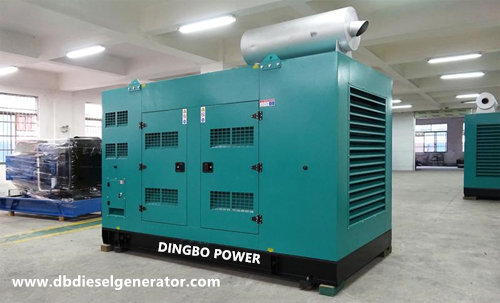dingbo@dieselgeneratortech.com
+86 134 8102 4441

- Home
- Products
- About Us
- Service
- News
- Technical Support
- Contact Us
dingbo@dieselgeneratortech.com
+86 134 8102 4441
Dec. 29, 2021
If a machine room is established for a Cummins silent generator set, it must be planned and designed reasonably, especially in terms of ventilation and cooling to meet safety standards. The Cummins silent generator set has strict requirements on the air inlet and exhaust outlet. Reasonable planning of a good machine room can increase the operating power of Cummins silent genset, so how to cool the silent generator room, the following silent generator manufacturer Dingbo Power specifically shares a few cooling treatment methods.

Water cooling treatment shall be adopted for the silent generator set room, and water shall be used as the refrigerant when the water source meets the requirements and the water temperature is low. When planning the computer room, the water source shall be met, the water quality shall be tasteless, free of bacteria, and will not corrode metals. The content of inorganic and organic matter in the sediment in the water shall meet the standard, the water temperature shall be low, and the temperature and water temperature in the diesel generator room shall not differ greatly, and the difference shall be controlled between 10 ℃ and 15 ℃.
If the water temperature is relatively high, it will require a large air supply system with a small temperature difference in the return air, which will increase costs and waste resources. In fact, there are other cooling methods, but the advantage of the water-cooled power station is that the air intake and exhaust volume are relatively small, so the required pipes are relatively small; the water-cooled power station is basically not affected by the external atmospheric temperature, and the machine room can be guaranteed at any time. The air cools down. The disadvantage is that the water consumption is relatively large. Because the water source is required to be sufficient, the cooling effect cannot be achieved when the water source is limited, so this cooling method cannot be selected.
In summer, it is suitable to use air-cooling to cool the computer room, use the low-temperature air outside the computer room to increase the air intake, and use the inlet and exhaust air to remove the waste heat in the computer room. The use of air-cooled power stations does not require a large amount of low-temperature water sources, and the ventilation system in the machine room is relatively simple and easy to operate. However, it is necessary to use a large amount of air intake and exhaust air volume, so the required pipe capacity is relatively large. There is also a method called transpiration cooling power station, which only needs a small amount of water, calculated according to the power of the diesel engine, has no strict requirements on the water temperature, and also uses half of the air intake, which is especially suitable for areas with difficult water sources and high water temperatures.
If it is when the water source cannot be satisfied and the inlet air temperature cannot be satisfied, artificial refrigeration can be used, and the air cooler with its own cold source can be used to eliminate the waste heat of the silent generator room. However, artificial refrigeration will waste resources and manpower, thereby increasing the cost, and in winter or excessive seasons, generally air cooling is the first choice. Automated units are selected for diesel power stations. After the compartments are completed, the personnel on duty generally do not need to enter the machine room. The temperature of the machine room cooling plan can be planned at 40 degrees Celsius.
Quicklink
Mob.: +86 134 8102 4441
Tel.: +86 771 5805 269
Fax: +86 771 5805 259
E-mail: dingbo@dieselgeneratortech.com
WhatsApp: +86 134 8102 4441
Add.: No. 10 Kechuang Road, High tech Zone, Nanning, Guangxi, China